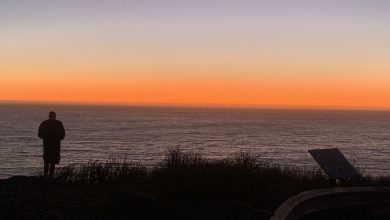Budget Travel: How to See the World on a Shoestring

When it comes to travel, I’m not the type to splurge on fancy hotels or overpriced tours. Instead, I prefer finding a way to see the world without breaking the bank. In fact, I’ve been able to go on many trips that cost less than $1,000—even when they involved flying abroad or staying in hostels for weeks at a time. Here are some tips for how you can travel on a shoestring too!
1. Travel When Other People Aren’t
The best way to save money on travel is by traveling when other people aren’t. This can mean traveling during off-peak times, or it could mean booking your flight on Tuesday rather than Friday.
If you’re planning a trip to Europe and want to visit several cities in one trip, consider going during May or October–these are the months when Europeans take their summer vacations. You’ll find that flights are cheaper and hotels offer better deals as well (often with complimentary breakfast).
If your goal is simply to see as much of a country as possible without spending too much money doing so, try visiting during its “shoulder season,” which is usually between January and March for southern hemisphere countries and October through December for northern hemisphere ones (although this varies depending on where exactly your destination lies).
2. Avoid Holiday Seasons
Avoid holiday seasons.
It’s that simple. Holiday seasons are expensive, crowded, and stressful. They’re also not the best time to travel for budget reasons. The crowds make it hard to find affordable accommodations and transportation (and sometimes even food). If you’re looking for cheap flights or hotel rooms during these times then you’ll likely end up paying more than usual because everyone else wants them too!
3. Stay in Hostels and Couchsurf
Hostels are a great way to meet other travelers, and they’re usually cheaper than hotels. Couchsurfing is a great way to meet local people, and it’s also free!
Hostels are more likely than hotels to have social events planned in their common areas (like board games), which can be fun if you’re traveling alone or with only one other person. They usually have kitchens so you can cook your own meals if you want something different from the hostel’s food options–and there are usually leftovers from other guests that you can take advantage of! Hostels often have better facilities than hotels as well: more bathrooms per person and larger rooms mean more privacy for everyone staying there at once; shared spaces like kitchens tend toward cleanliness because everyone has an incentive not just for themselves but also their fellow guests’ health; shared showers mean less waiting time overall; etcetera ad infinitum…
4. Eat Where Locals Do
- Eat where the locals do.
- Eat at local restaurants and food stalls, not tourist traps.
- Try street food. It’s usually cheap, delicious and authentic!
- Try local cuisine, dishes and fruits/vegetables that can only be found in that country or region (don’t limit yourself to just “Italian” or “French” foods).
5. Don’t Rush Through Your Trip
One of the best ways to save money while traveling is to slow down. The world’s most memorable destinations are often in places that aren’t on the typical tourist circuit, and they’re best enjoyed by spending time there instead of rushing from one place to another. Instead of racing through your trip like a fire drill, take your time and enjoy the journey! You’ll be glad you did when you look back on all those amazing moments on your trip–and remember that traveling isn’t just about seeing things; it’s also about experiencing them in real time.
6. Pack Light Or Take Luggage Restrictions Seriously
Packing light is one of the most important things you can do to save money while traveling. If you’re only going on a short trip, it’s not as much of an issue because there’s no reason to take more than one or two pairs of clothes with you. But if you plan on doing some serious exploring, then packing light becomes even more crucial–you don’t want to be weighed down by all that extra stuff!
The best way to pack light is by bringing everything in one bag (or two at most). This should include all your clothing items and toiletries as well as any other essentials like medications or electronics (e-reader, laptop etc.). It also helps if this bag has wheels so that carrying it around isn’t such a chore. If necessary and allowed by airlines/train companies/etc., consider using laundry services available along the way instead of washing things yourself at each stopover location; this can save up lotsa time during travel days!
7. Check Out Camping Gear Beforehand to Find Exactly What You Need
Before you go, find out what camping gear you need to buy. If you’re going to a campsite that has all the facilities, then it might not be necessary for you to bring anything at all. However, if there aren’t any showers or bathrooms nearby and there are no trash cans on site (or even fire pits), then bring along some basic necessities such as toothbrushes and sunscreen. You can also save money by purchasing things like bug spray locally; just make sure they’re safe for human use before buying them!
It’s important to check out the regulations at each campsite so that nothing comes as a surprise when it comes time to set up camp–especially if your tent isn’t easy-to-set-up or take down! Some places require tents be staked into the ground while others don’t allow them altogether; either way, being informed beforehand will help ensure an enjoyable experience once everything is ready for bedtime after sunset.*
8. Rent A Car (Just As Much As You’re Comfortable With) Instead of Taking a Train, Plane or Bus
A rental car will allow you to get off the beaten path and see more of the country than if you had taken a train, plane or bus. You can stop when you want, at the places that interest you most. If there’s an amazing restaurant in a small town but no one knows about it except locals, then perhaps it’s time for some road trip research!
You’ll also get to eat at local establishments where people really eat–not just tourist traps with overpriced menus tailored towards foreigners.
It takes some planning, but you can see the world on a shoestring!
It takes some planning, but you can see the world on a shoestring!
Traveling on a budget is possible. It takes some planning and discipline, but it’s worth it in the end. Traveling can be an amazing experience that changes your life and helps you grow as a person, so don’t let anything stop you from experiencing what life has to offer! You don’t need to spend thousands of dollars on flights or hotels–just take advantage of free things like hostels, couchsurfing and hitchhiking (which we’ll talk more about later).
Conclusion
So there you have it, my top tips for budget travel. If you follow these guidelines, I’m sure that your trip will be cheaper and more enjoyable than ever before!



